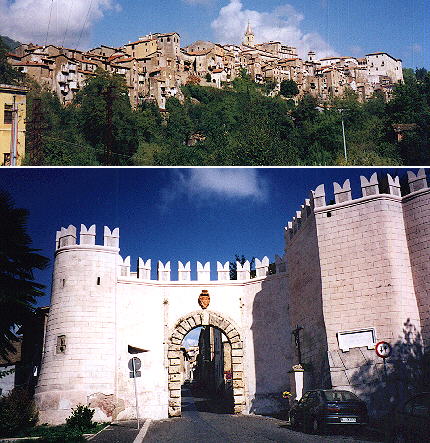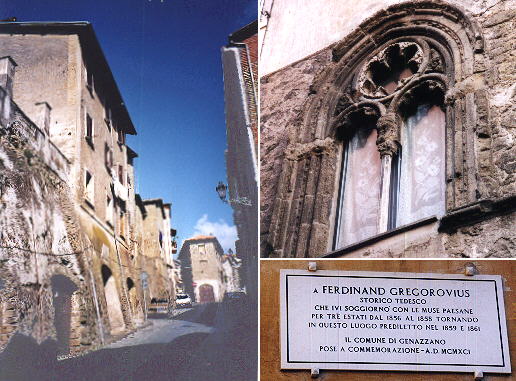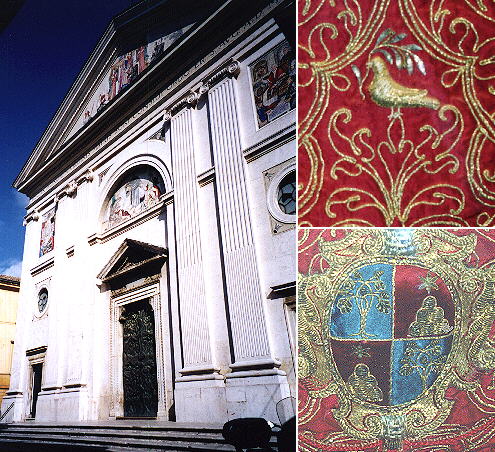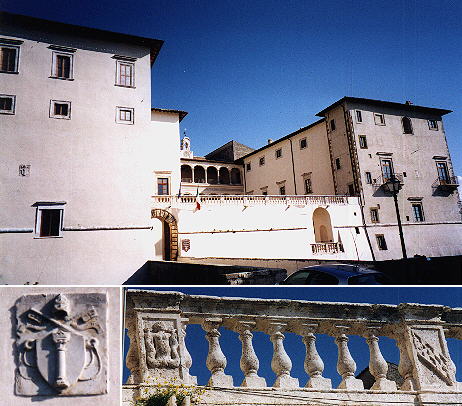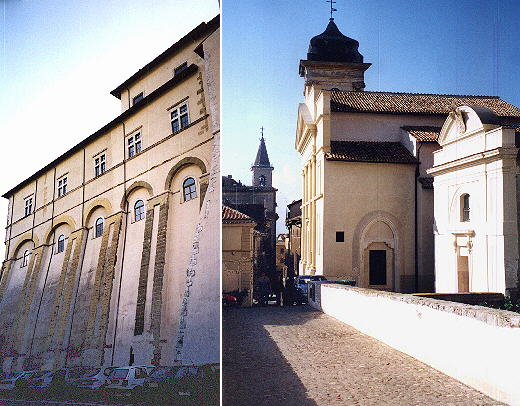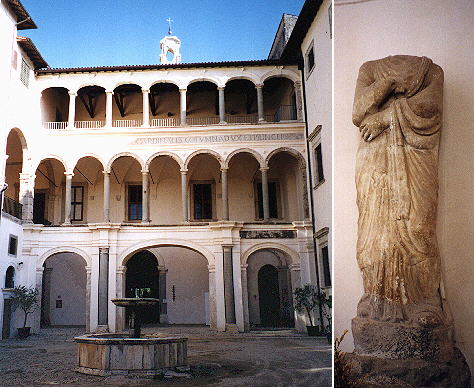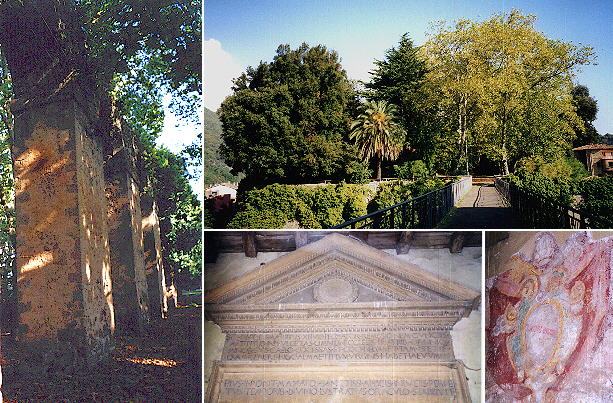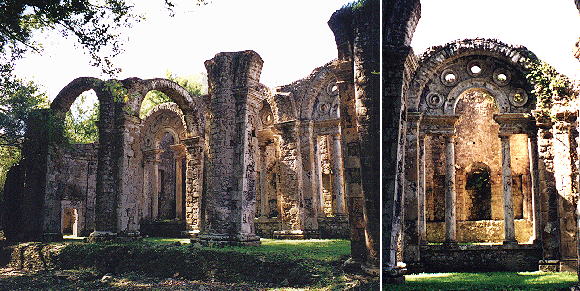  Ferdinand Gregorovius' Walks - Genazzano
Genazzano is just a few miles after Palestrina and Gregorovius on
seeing it from Via Labicana has the impression of watching a procession as if the houses were moving
towards the castle of the Colonna on the top of the hill. Genazzano has only one gate which has some
resemblance with those of Palestrina.
There is only one street in Genazzano going up towards the church of Buon Consiglio and
the castle. The houses are very simple, only some gothic windows embellish them. On one of them
there is a plaque commemorating the visits of Gregorovius.
The church of S. Maria del Buon Consiglio was (today a bit less) a famous sanctuary due to a sacred image which was miraculously moved from Scutari in Albania to Genazzano. Gregorovius attends the feast which occurs in September and he describes the costumes of the different peasants of the Roman Campagna. The popes used to make presents to the church: among them I noticed a finely embroidered chasuble, which was most likely started when Innocentius X was pope and completed after his death, under Alexander VII: this could explain why the design shows many doves (a reference to Innocentius X), but the chasuble bears the coat of arms of Alexander VII.
Martinus V, the only pope of the Colonna family, was born in Genazzano and used to return there very often. He enlarged and embellished the family palace and his coat of arms is still visible on one of the walls. In the XVIIth century the palace was given a gentler look by Antonio del Grande an architect who designed also the great gallery inside Palazzo Colonna in Rome. The balustrade is decorated with other heraldic symbols of the family.
The back of the palace shows clearly the first purpose of the building which was a fortress.
The courtyard is very finely designed and it is embellished by a fountain. When Gregorovius visited it, he found many headless statues (today only one is left).
Genazzano did not have a street suited for having a little walk, so Gregorovius used to walk outside Genazzano going from the Colonna palace to the abandoned church of S. Pio. He walked along the ruins of an aqueduct built by the Colonna to supply the palace with water. In the church of S. Pio (in poor condition) I found a coat of arms of Sixtus V.
Gregorovius describes in detail the life of the peasants, oppressed by debts. The Colonna were entitled to receive a quarter of the yields and borrowing money was very expensive. He shows a deep knowledge of agricultural matters. Immediately outside Genazzano in a little valley the Colonna built a little casino which they used for parties and games. The ruins have been restored and the site has some magic in it.
Next page Introductory page on Ferdinand Gregorovius Palestrina Paliano Anagni Other walks: The Ernici Mountains: Ferentino Alatri The Volsci Mountains: Valmontone Segni Norma Cori On the Latin shores: Anzio Nettuno and Torre Astura Circe's Cape: Terracina San Felice The Orsini Castle in Bracciano Subiaco, the oldest Benedictine monastery See my Home Page on Baroque Rome or my Home Page on Rome in the footsteps of an XVIIIth century traveller |
All images © 1999 - 2003 by Roberto Piperno. Write to romapip@quipo.it
